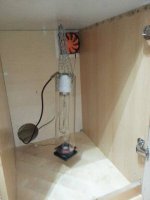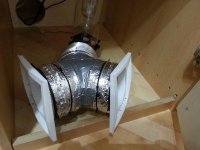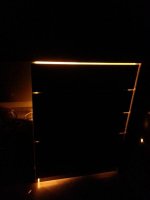Hey!
I'm constructing a small personal grow 2,06x 1,5 x2,26(height) with a vertical 150w in cool tube in the middle for small vertical SOG style.
Because I would like the grow to be almost completly silent I would like to use PC fans, but don't know how hot does a 150w hps get. I was thinking of putting 80mm fan on bottom of cooltube and a 120mm 70 CFM with DIY scrubber as exctractor fan. Intake would be passive.
I do have a S&P 160TD-SILENT but it is still a little too loud and I don't want to waste money to find out if variac would make it silent enough.
Do you think I would be able to control temperatures with PC fans only?
Thank you for your anwser!
I'm constructing a small personal grow 2,06x 1,5 x2,26(height) with a vertical 150w in cool tube in the middle for small vertical SOG style.
Because I would like the grow to be almost completly silent I would like to use PC fans, but don't know how hot does a 150w hps get. I was thinking of putting 80mm fan on bottom of cooltube and a 120mm 70 CFM with DIY scrubber as exctractor fan. Intake would be passive.
I do have a S&P 160TD-SILENT but it is still a little too loud and I don't want to waste money to find out if variac would make it silent enough.
Do you think I would be able to control temperatures with PC fans only?
Thank you for your anwser!







